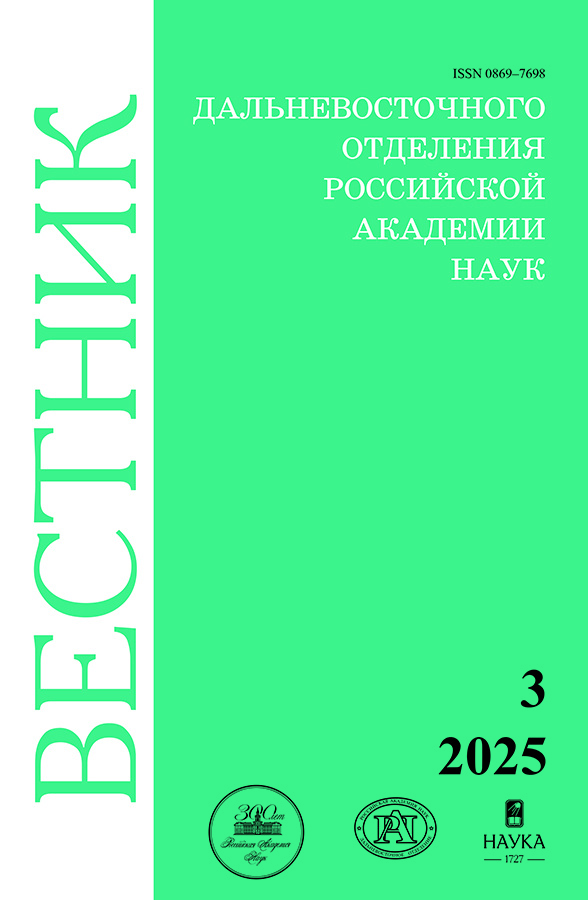Changes in breeding and genetic properties of the Sakhalin population of the Holstein breed over the period of long-term breeding
- Authors: Kuznetsov V.M.1, Revina G.B.1
-
Affiliations:
- Sakhalin Scientific Research Institute of Agriculture – VIR Branch
- Issue: No 3 (2025)
- Pages: 114-125
- Section: Agricultural Sciences
- URL: https://permmedjournal.ru/0869-7698/article/view/688934
- DOI: https://doi.org/10.31857/S0869769825030118
- EDN: https://elibrary.ru/PNNFZF
- ID: 688934
Cite item
Full Text
Abstract
As a result of the conducted research, the breeding and genetic mechanism of the formation of productive traits in cows of the Sakhalin population has been studied. The modern breed group combines four related populations – American, Canadian, Japanese and Sakhalin. Studies have shown that a limited population limits fertility, does not show heterosis, and reduces adaptability in subsequent generations. The main breeding and genetic parameters of breeding herds have been determined. The correlation coefficient between the milk yield of cows for 305 days of the first lactation and the service period was –0,227±0,013, the coefficient of linear regression, respectively (byx = 0,45±0,033, F test 5.2). A positive correlation was found between the milk yield of full-aged cows over 305 days of lactation and the number of retired cows in fertility (r = +0,52±0,012).
Full Text
About the authors
Victor M. Kuznetsov
Sakhalin Scientific Research Institute of Agriculture – VIR Branch
Author for correspondence.
Email: vik79344625@yandex.ru
ORCID iD: 0000-0002-4366-7628
Doctor of Sciences in Agriculture, Leading Researcher
Russian Federation, Yuzhno-SakhalinskGalina B. Revina
Sakhalin Scientific Research Institute of Agriculture – VIR Branch
Email: sakhnii_sakhalin@mail.ru
ORCID iD: 0000-0002-8998-2826
Candidate of Sciences in Biology, Senior Researcher
Russian Federation, Yuzhno-SakhalinskReferences
- Kuznetsov V.M. Sakhalin population of the Holstein breed: monograph. Cheboksary: Publishing house “Sreda”; 2020. 248 p. (In Russ.).
- Dzilieva T.I., Nikiforov M.A. Characteristics of Holstein-Frisian cattle bred on Sakhalin and the organization of breeding work with it. Annual report of the SAKHKNII (Manuscript). 1947. 20 p. (In Russ.).
- Falconer D.S. Introduction to the genetics of quantitative traits. Moscow: Agropromizdat; 1985. 486 p. (In Russ.).
- Van Schyndel S.J., Bauman C.A., Pascottini O.B., Renaud D.L., Dubuc J., Kelton D.F. Reproductive management practices on dairy farms: Canadian national dairy study – 2015. Journal of Dairy Science. 2019;102(2):1822–1831.
- Edwards-Callaway L.N., Walker J., Tucker C.B. Culling decisions and dairy cattle welfare during transport to slaughter in the United States. Frontiers in Veterinary Science. 2019;5:343.
- Bauman C.A., Barkema H.W., Dubuc J., Keefe G.P., Kelton D. Canadian National Dairy Study: Herd-level milk quality. J. Dairy Sci. 2018:2679–2691.
- Foksha V., Konstandoglo A. Dairy productivity of Holstein cows and realization of their genetic potential. Bulgarian Journal of Agricultural Science. 2019:31–36.
- Zinovieva N.A., Pozyabin S.V., Chinarov R.Y. Assisted reproductive technologies: the history of their formation and their role in the development of genetic technologies in cattle breeding (review). Agricultural Biology. 2020;55(2):225–242. (In Russ.).
- Van Raden P.M., Van Tassell C.P., Wiggans G.R., Sonstegard T.S., Schnabel R.D., Taylor J.F., Schenkel F.S. Invited review: reliability of genomic predictions for North American Holstein bulls. Journal of Dairy Science. 2009;92(1):16–24.
- Wright J.R.,Van Raden P.M. Genetic evaluation of dairy cow livability. Journal of Animal Science. 2016;94:178.
- Hagan B.A., Cue R. Generation intervals in Canadian dairy cattle herds. Can. J. Anim. Sci. 2020;100:175–183.
- Dechow C.D., Rogers G.W. Short communication: Genetic lag represents commercial herd genetic merit more accurately than the 4-path selection model. J. Dairy Sci. 2018:4312–4316.
Supplementary files







